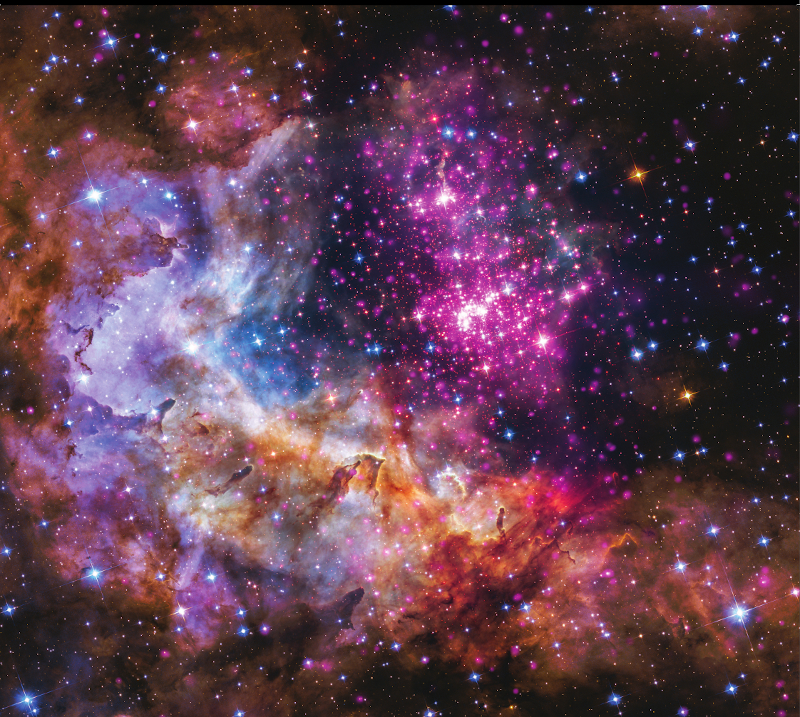
 Credit: X-ray: NASA/CXC/SAO/Sejong Univ./Hur et al; Optical: NASA/STScI; Sonification: NASA/CXC/SAO/K.Arcand, SYSTEM Sounds (M. Russo, A. Santaguida)
Credit: X-ray: NASA/CXC/SAO/Sejong Univ./Hur et al; Optical: NASA/STScI; Sonification: NASA/CXC/SAO/K.Arcand, SYSTEM Sounds (M. Russo, A. Santaguida)
Hearing the Invisible Universe
The exploration of the space beyond earth has been largely conducted using a single sense: vision. Most of our knowledge of the cosmos, from the big bang to modern times, has been obtained through the analysis of the emission of some form of light. For a long period of time our understanding was limited to the study of phenomena generating the narrow band of light to which our eyes are sensitive, but now we've expanded our sensitivity to the entire spectrum of electromagnetic radiation, even the invisible parts. But to study invisible sources like stars that emit in the X-ray or radio bands requires us to translate that information into something our senses can understand. Historically, this has been the sense of sight. But there's no reason to limit ourselves. You can now touch the invisible X-ray Universe if you'd like. You can also listen to it too, through a process known as sonification. Sonification converts visual information into sound. This enables us to explore the Universe in an entirely new way, which can reveal subtle patterns in nature that might be missed by our eyes. It's been used by the good people at the Chandra X-ray Center to convert stunning X-ray images into sound. The image above shows a composite X-ray image (from the Chandra X-ray Observatory) and optical image (from the Hubble Space Telescope) of Westerlund 2, a massive cluster of young stars. Brighter sources correspond to louder sounds, while the vertical location of a source corresponds to the frequency or pitch of the sound, making a beautiful cosmic symphony - go have a listen.
Published: September 27, 2021
<
HEA Dictionary ● Archive
● Search HEAPOW
● Other Languages
● HEAPOW on Facebook
● Download all Images
● Education ● HEAD
>

Each week the HEASARC
brings you new, exciting and beautiful images from X-ray and Gamma ray
astronomy. Check back each week and be sure to check out the HEAPOW archive!
Last modified Tuesday, 27-Feb-2024 10:10:19 EST


